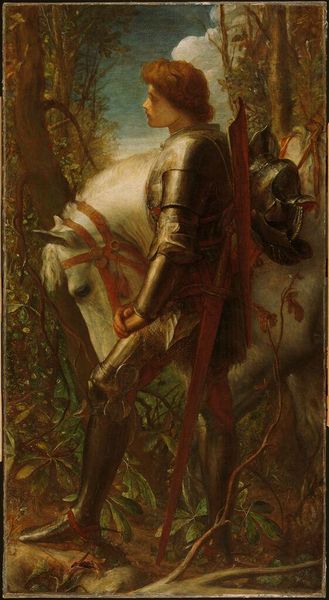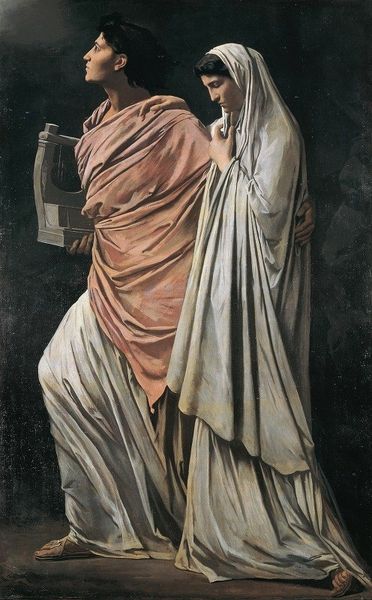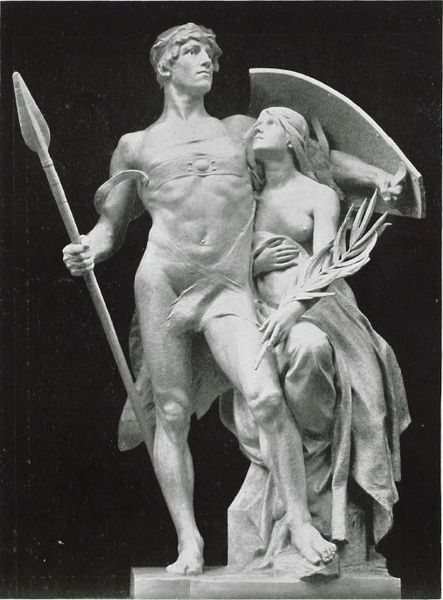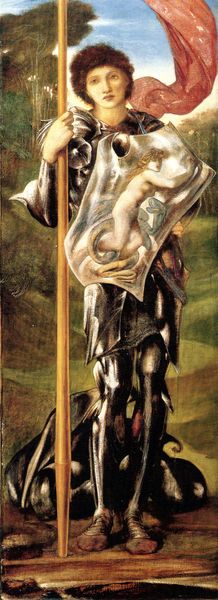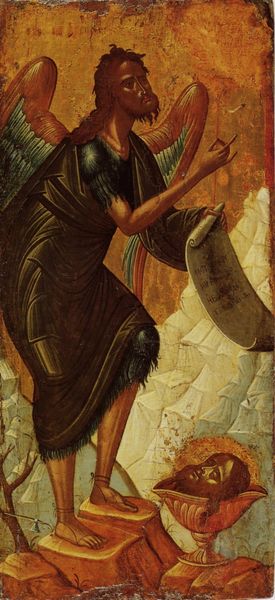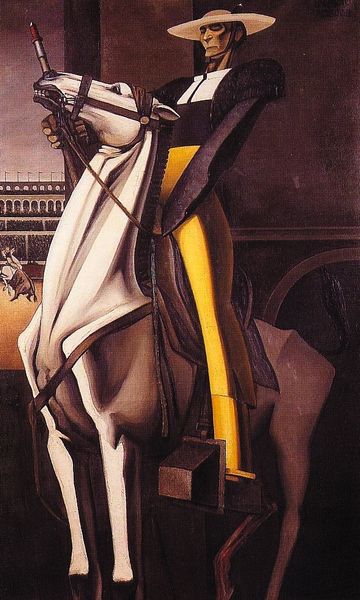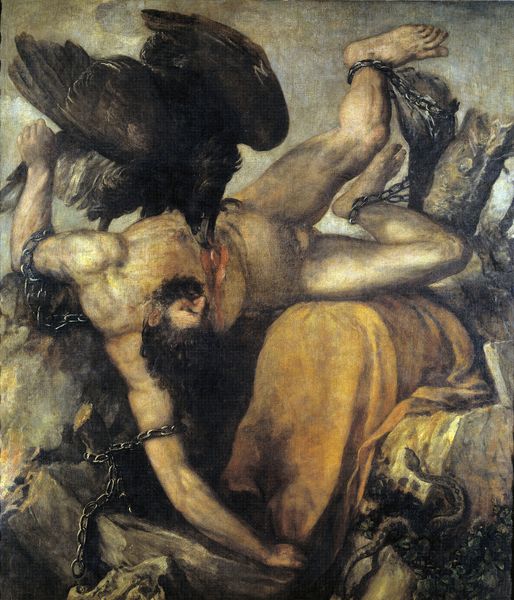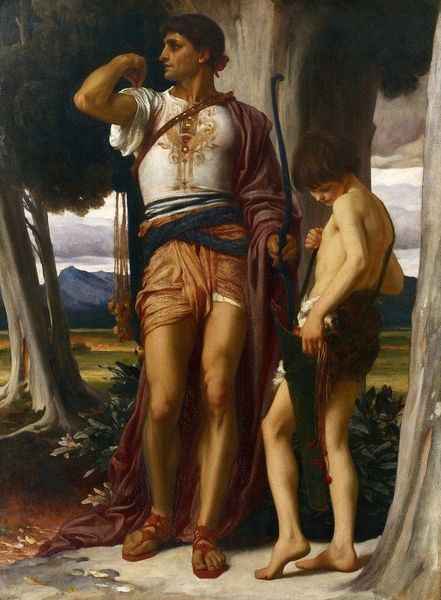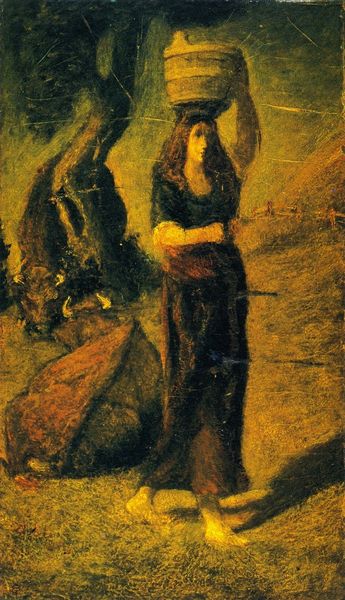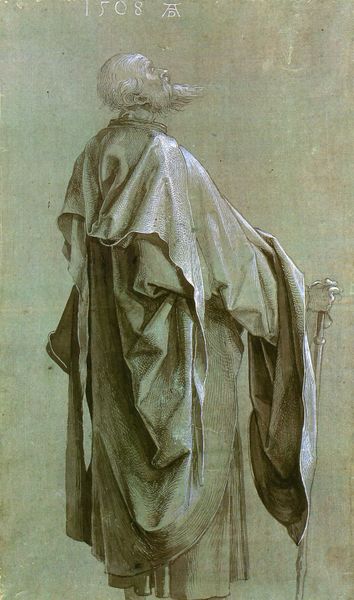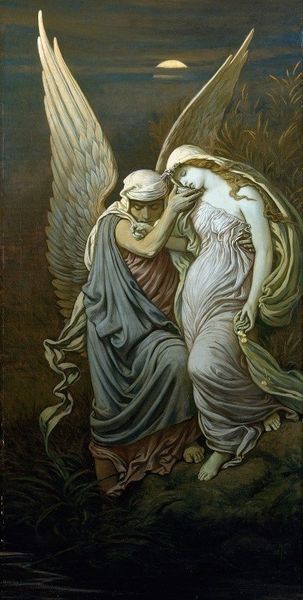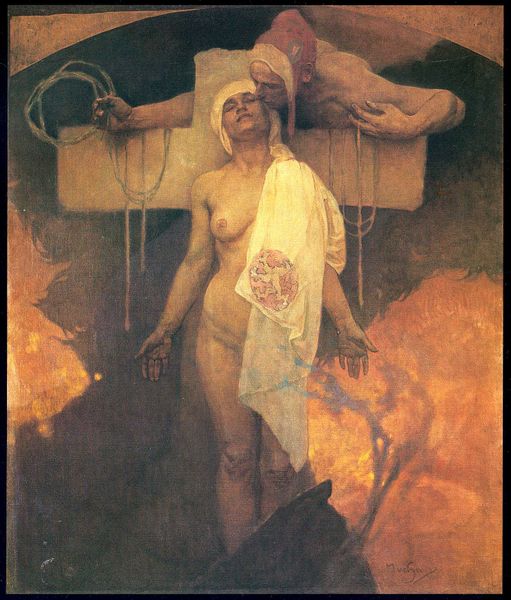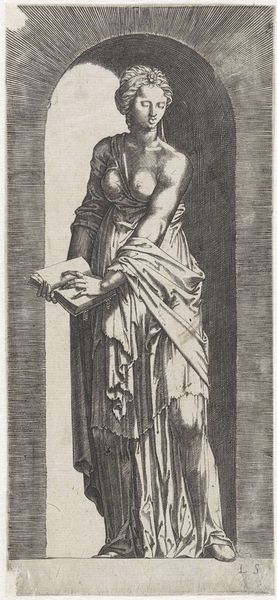
Copyright: Public domain
Jacek Malczewski painted this haunting image of Thanatos, the Greek god of death, sometime in the late 19th or early 20th century. Notice the androgynous figure holding a curved sword, posed in front of a classical building. These symbols invite us to consider the cultural history of death. Thanatos, often depicted with wings, embodies the moment of transition. The sword, a recurring symbol of death, represents the cutting of the thread of life, an allegorical reference to the Three Fates of the ancient world. We can trace this motif through medieval art, where the Grim Reaper wields a scythe, reaping souls. Over time, the sword evolves, reflecting cultural shifts in how we perceive death. The Renaissance saw its association with power and justice, while Romanticism imbued it with tragic, heroic undertones. Malczewski presents death not as a grim end but as a moment of reflective silence, engaging us on a profound level. The androgynous figure of Thanatos blurs gender, highlighting the universality of death. As we confront this image, let us consider how our collective memory shapes our understanding of death. It is an end, yes, but also a transition, a rebirth, a continuous cycle.
Comments
No comments
Be the first to comment and join the conversation on the ultimate creative platform.

